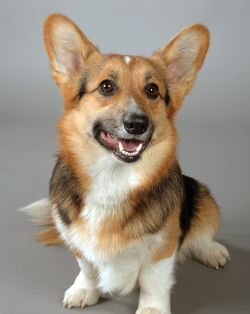Page 67
Publishing

The word “publish” means “make public” or simply “share.” So publishing is the goal for most of your writing assignments. You want to share them with others.
Publishing comes in many forms. It might involve posting pages on the bulletin board in your class. It might mean sharing with others on a digital classroom page or in a class blog. It could even mean entering some of your best work in a contest, or sending a letter to a newspaper!
This chapter helps you design your writing to look its best and then share it near and far.
What’s Ahead
WE 068
Page 68
Designing Your Writing
Design should always make your ideas clearer. The whole point of writing is to take thoughts from your head and put them into someone else’s head. That’s why you should design writing not to distract from ideas, but to make them clear and inviting to readers. Follow these tips.
Title and Headings
- Think up a catchy title, one that makes readers want to read.
- Use an easy-to-read font (type style) for the body and any headings.
- If your document is long, consider using headings to make your writing easier to follow.
Margins and Spacing
- Double-space your writing and leave a one-inch margin on all four sides of your paper.
- Indent the first line of each paragraph.
- Leave one space at the end of each sentence (after the period, exclamation point, or question mark).
- Avoid putting a heading or the first line of a paragraph at the bottom of a page.
Graphics
- Use a bulleted or numbered list if it makes information easier to read.
- Add a photo, illustration, or chart to clarify your ideas. Make sure the graphic is free to use (public domain).
- Provide a credit for any graphics you use.
Tip These guidelines are for your school writing—essays, reports, and other papers. For personal writing, you can be more creative when designing your documents.
WE 069
Page 69
Effective Design in Action
The following student report uses effective design. See how each element makes the ideas clearer and easier to understand.
The title is 18-point type, boldfaced. Little Big Dog
The main text is 12-point type. Have you ever seen a dog with big, pointed ears and short legs? Was it so cute you just wanted to take it home? Chances are, you were looking at a Pembroke Welsh corgi. Let me introduce you to this special dog.
Physical Features
A helpful photo is added.
Welsh corgis were originally bred in Wales. Their average height is 10–12 inches, and an adult dog weighs approximately 25–30 pounds. The dog’s small size means it doesn’t take up much room as a pet.
Welsh corgis come in several colors: red, sable, fawn, black, and tan—and with or without white markings. Their coats are soft and thick and of medium length.
Margins are one inch all around.
WE 070
Page 70
The headings are 14-point type and boldfaced. Special Traits
Since Welsh corgis are very intelligent, they are easy to train. One of the jobs they are good at is herding sheep and cattle. Welsh corgis are also loyal companions for people of all ages.
Welsh corgis are known for being bold but kind and alert. They are friendly to all and are especially good with children. Because of their herding instinct, young corgis might nip at a person’s ankles until the dog has training. Dog owners sometimes enter corgis in dog shows.
Proper Care
A Welsh corgi needs proper care to lead a good life. Here are the main things you should do:
- A bulleted list presents information in an effective way. Walk your dog using a leash.
- Give him toys and let him fetch and play tug-of-war.
- Feed him quality dog food.
- Brush him every day.
- Bathe him every three months.
Next time you see a dog that looks like a miniature German shepherd, look again. It may be a Pembroke Welsh corgi, with its full-sized body and half-sized legs. This dog is so special that Queen Elizabeth II had more than 30 of them.
WE 071
Page 71
Creating a Classroom Portfolio
There are several different kinds of classroom portfolios. Two popular kinds are the showcase portfolio and the growth portfolio. Your teacher will tell you what kind to compile.
Showcase Portfolio
In a showcase portfolio, you show off your best work. Your best work may include writing that you like very much or writing that you’ve worked especially hard on. Your teacher will help you, but in the end, it’s important that you decide which pieces are your best.
Growth Portfolio
If you’ve ever looked at a photo album, you know that people change over time. Writing is like that. It changes as the writer changes. A growth portfolio contains writing you have done throughout the year. It shows how your writing changes from September to December to May. By the time you get to May, you might look back at your September writing and say, “Wow! Did I write that? Can that really be mine?”
“I used to think of writing as my most dreaded fear. Now it’s what I look forward to. . . . When I look over my work, I feel honored that I wrote it.”
—Kristen Tomlinson, student
Tip A digital portfolio is any type of portfolio available electronically. In addition to written work, it may contain graphics, video, and sound. A digital portfolio provides classmates, friends, and family members instant access to your work.
WE 072
Page 72
Five Tips for a Super Portfolio
1. Date everything. 🟪 It’s very important that you date everything, especially in a growth portfolio. Knowing when you wrote each piece will help you see how your writing has changed over time.
2. Keep your portfolio small, but not too small. 🟪 Adding a new sample of your writing every four to six weeks is usually about right for a growth portfolio. More samples than that can make your portfolio hard to manage, and fewer samples won’t tell enough about you.
3. Attach a self-evaluation to every piece. 🟪 Besides telling what you like about the writing, mention one or two problems you had and how you solved them. Also give reasons for choosing each sample—it’s fun for readers to know this information.
4. Write a letter of introduction. 🟪 Be sure to tell who you are and what kind of portfolio you’ve made. Suggest some things to look for, like interesting details, a strong voice, or your use of humor.
5. Keep on schedule. 🟪 Do not wait until the night before your portfolio is due to quickly write eight pieces and stick them in a folder. That would be like grabbing anything out of your closet to pack a suitcase. You won’t like the result.
Tip Portfolios, like people, are different. Your portfolio will not look like anyone else’s—and that’s a good thing. The writing you choose should tell the story of you as a writer.
WE 073
Page 73
Publishing Ideas
There are many different ways that you can publish your writing. The most basic form of publishing is sharing your writing in person with your classmates and teacher. This page lists other publishing ideas you can try.
( In the Community )
- Submit it to the local newspaper.
- Enter it in a local writing contest.
- Submit it to a church or civic publication.
- Perform it for a community group.
- Make copies for waiting rooms.
( In Class )
- Perform your writing.
- Include it in the classroom blog.
- Display it in class.
- Share it with your writing group.
- Add it to a classroom collection.
( On Your Own )
- Include it in a family newsletter.
- Post it on a personal blog.
- Email it to relatives.
- Recite it in an online video session.
- Submit it to a digital publication.
( In School )
- Include it in the school’s website.
- Submit it to the school newspaper.
- Perform your writing at an assembly.
- Post it in a hallway display case.
- Make copies for the library.